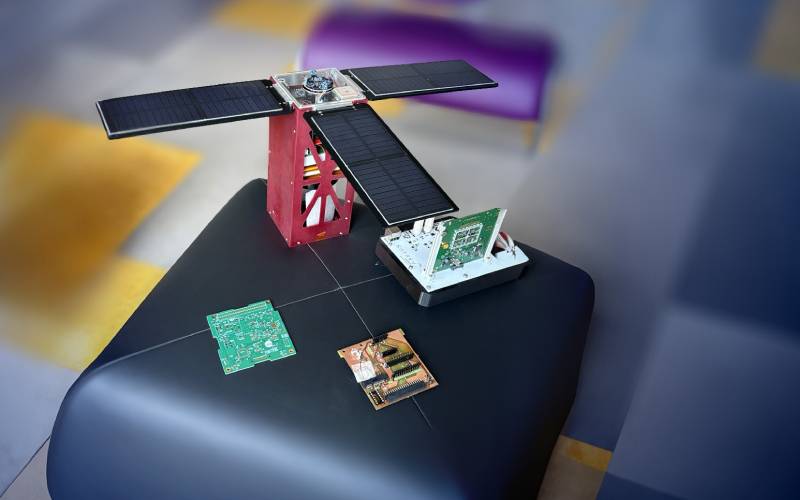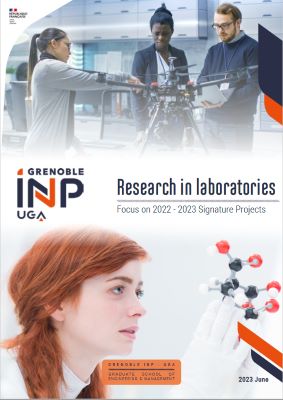
Developing and testing long-distance, low-energy radio communication protocols is the main goal of the Thingsat nanosatellite project launched in 2019. “By reducing the quantity of energy necessary for transmission of information between space and the Earth, we can reduce the size of solar panels and on-board batteries in satellites”, explains Didier Donsez, LIG researcher and project coordinator. “When you know that sending a gram of payload into orbit costs approx. €250, you measure the economic impact of such an advance!”
Funded by several partners,(4) the Thingsat project will enable testing and improvement of the quality of communication (robustness, sustainability, etc.) between a satellite and connected objects or a station located on the ground. The challenge is immense: it involves transmitting data over distances of approx. 500 km, using the energy of a simple car remote control. Hundreds of IoT objects are already equipped with LoRa radio modulation, which was invented in Grenoble. It’s one of the technologies studied in the context of New Space to push back the limits of transmission.
Optimised radio links on the ground and in space
This type of robust and energy-saving communication network could for example enable the connection of sensors set up in isolated or extreme zones, such as a buoy in the middle of the Pacific measuring environmental conditions or climate monitoring devices in the Antarctic. In transit between the satellite and an earth station in Europe, this data could be collected and analysed in near real-time to monitor variation in meteorological and oceanographic conditions. “We evaluate the robustness and modulation of signals and examine the possibility of new services, such as distribution of secure time to objects on the ground from the satellite or synchronisation of satellite clocks from the ground,” explains Didier Donsez.
Thingsat is also positioned as a research tool accessible to other laboratories in France. For example, encryption and message compression protocol testing is ongoing, in collaboration with other university space centres, particularly via AMI CMA COMETES.(5)
Second launch coming soon
In 2022, a first Thingsat mission ended in the loss of the satellite. So the team repeated the experiment aiming for a second launch, initially scheduled for October 2024 but postponed by several months. The next launch is expected between March and June 2025. Pending launch into orbit, the Thingsat team is carrying out tests on board stratospheric balloons to reproduce communication conditions of several hundred kilometres.
By exploring concrete application scenarios and sharing its test platform, the Thingsat project places Grenoble at the cutting edge of the Satellite Internet of Things, a fast-growing field that could transform the way in which connected objects communicate on Earth and in space.
* Centre Spatial Universitaire de Grenoble, Grenoble University Space Centre
** Observatoire des Sciences de l'Univers de Grenoble, Grenoble Observatory of Earth Sciences and Astronomy
(1) CNRS / Inria / UGA / Grenoble INP – UGA
(2) CNRS / Université Savoie Mont-Blanc / UGA / Grenoble INP – UGA
(3) CNRS / UGA / IRD / INRAE / Meteo France
(4) The project is funded by industrial patrons such as Fondation UGA, INS2I (Institut des Sciences de l’Information et de leurs Interactions, Institute of Information Sciences and their Interactions), LIG, as well as other one-off support such as Persyval Lab and Carnot LSI, making it a truly interdisciplinary collaboration.
(5) Selected as part of the “Future skills and business lines” call for expression of interest, the COMETES (COmpétences Et METiers pour l’ESpace, Skills and Professions for Space) project is coordinated by the University of Toulouse. It was jointly developed in collaboration with 25 partners from five regions, with close involvement from ISAE Group, Universities and University Space Centres, the Occitanie and Nouvelle-Aquitaine Regions, and industrialists.



